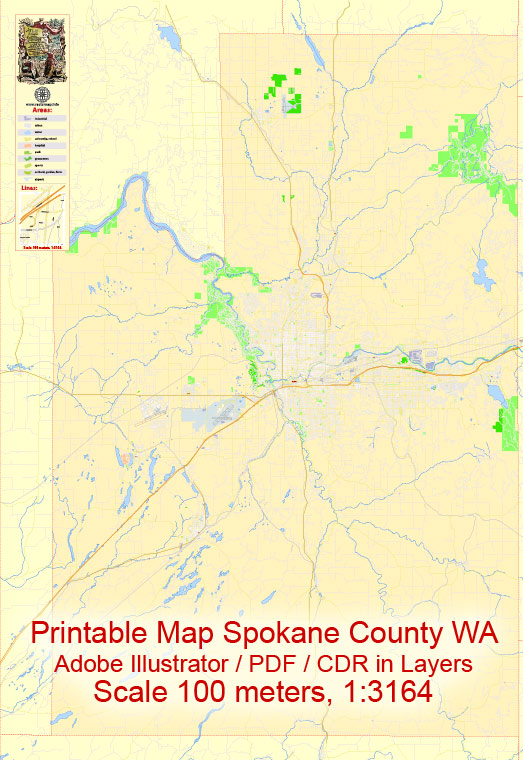General overview of the history of urban development in Spokane County and Spokane City, Washington, up to that point. Please note that more recent developments may not be included in this response.
Early History:
- Spokane County and the city of Spokane are situated in eastern Washington and have a rich history tied to the indigenous peoples of the region, primarily the Spokane Tribe.
- The area was initially inhabited by Native American tribes, and its early development was influenced by the fur trade and later the influx of settlers during the westward expansion.
Late 19th Century:
- Spokane’s development accelerated with the arrival of the Northern Pacific Railway in the 1880s. The city became a crucial transportation hub and trade center.
- The mining industry, particularly the discovery of gold and silver in the surrounding region, played a significant role in the economic growth of Spokane.
Early 20th Century:
- Spokane continued to thrive as a regional economic center, with industries such as mining, timber, and agriculture contributing to its prosperity.
- The city’s population grew, leading to the expansion of infrastructure, including schools, hospitals, and transportation networks.
Mid-20th Century:
- The mid-20th century saw continued economic diversification, with the expansion of manufacturing and technology sectors.
- The completion of the Grand Coulee Dam in the 1940s also contributed to the availability of cheap hydroelectric power, further supporting industrial development.
Late 20th Century to Present:
- Like many American cities, Spokane experienced suburbanization and the growth of suburban communities in the latter half of the 20th century.
- The city underwent various urban renewal projects, aiming to revitalize downtown areas and improve infrastructure.
- Spokane’s economy evolved, with a shift towards services, healthcare, and education sectors playing an increasingly important role.
Cultural and Recreational Development:
- Spokane has invested in cultural and recreational amenities, such as Riverfront Park, which was the site of the 1974 World’s Fair.
- The city hosts various events and festivals, contributing to its cultural vibrancy.
Challenges:
- As with many urban areas, Spokane faced challenges related to infrastructure, economic fluctuations, and social issues. Efforts to address these challenges have been ongoing.
Conclusion: Spokane County and Spokane City have a diverse history shaped by economic forces, transportation developments, and shifts in industry. Over the years, the city has adapted to changing circumstances, aiming for both economic growth and the well-being of its residents. For the most current information, I recommend checking more recent sources or local historical archives.


 Author: Kirill Shrayber, Ph.D.
Author: Kirill Shrayber, Ph.D.